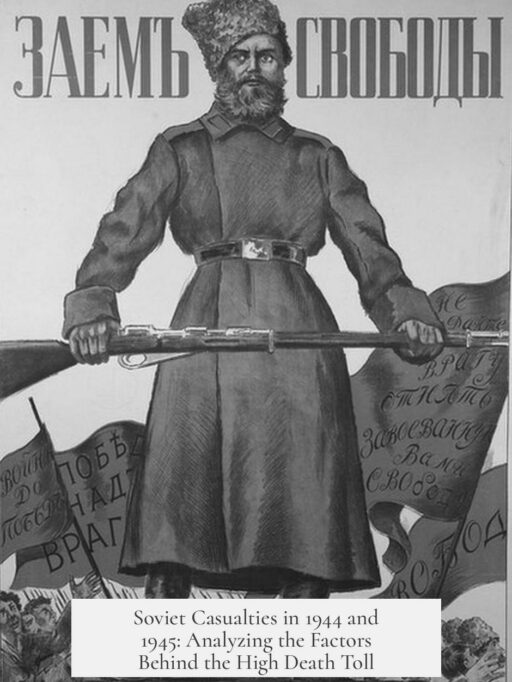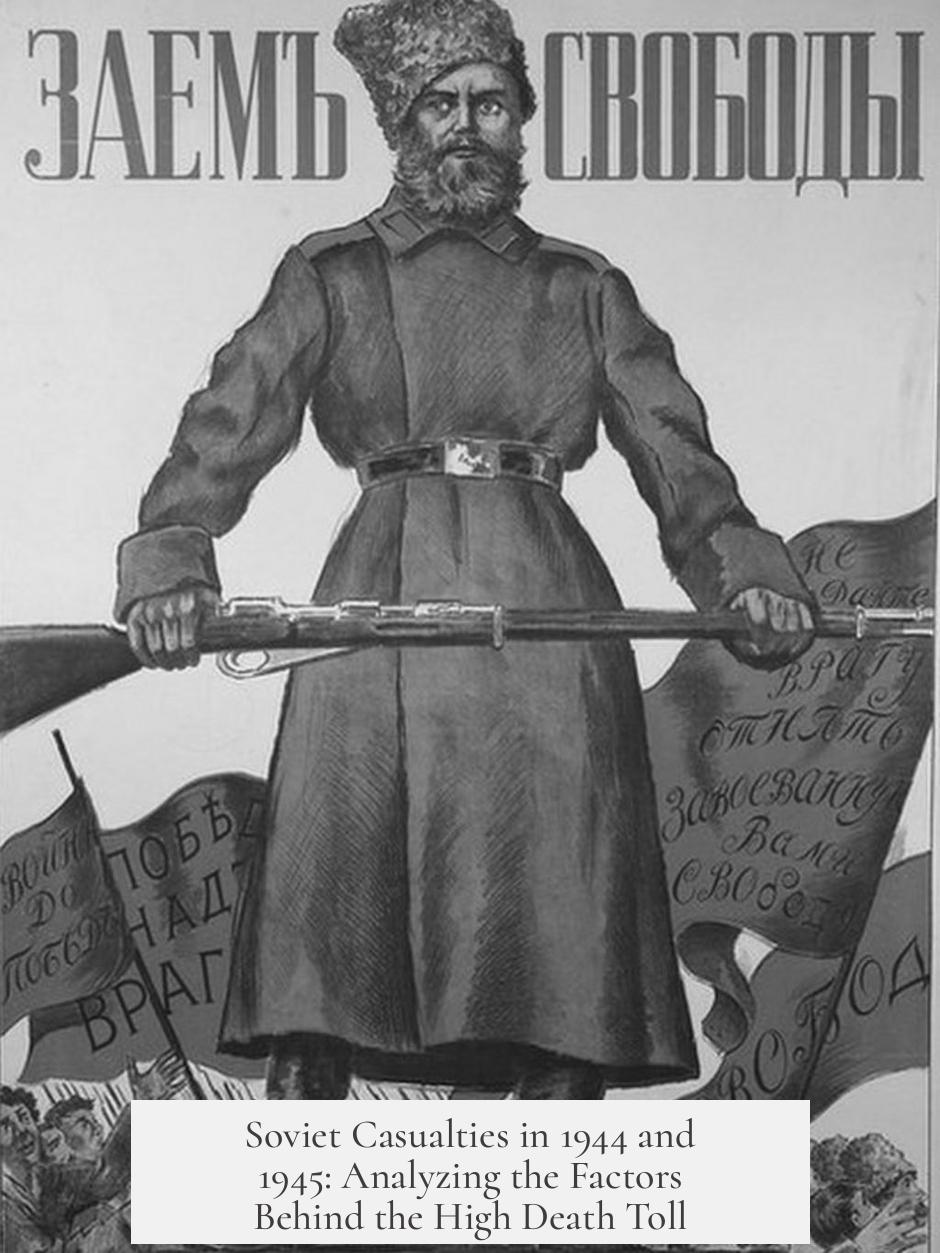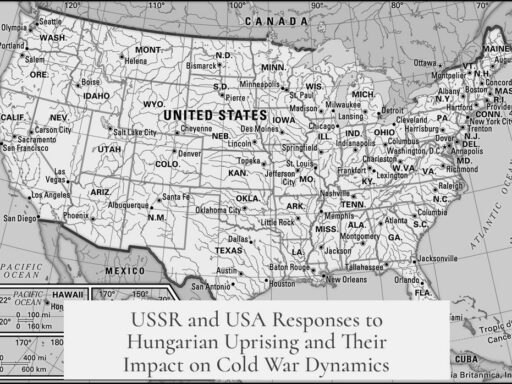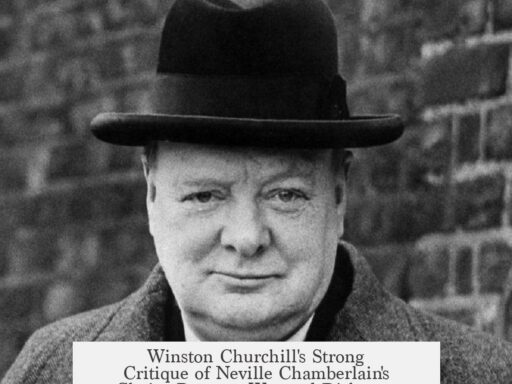The Soviets continued to suffer high casualties in 1944 and 1945 primarily because they remained on the offensive against deeply entrenched German forces employing ferocious resistance and advanced defensive tactics, coupled with Soviet strategic doctrines that emphasized large-scale, costly operations to destroy rather than merely defeat the enemy.
Being on the offensive explains much of the high Soviet casualty rate. Attacking defensive positions generally results in greater losses than defending does. The Soviets faced fortified German positions requiring a 3:1 superiority in men, tanks, and artillery just to minimize their own losses compared to defenders. Despite Germany retreating strategically on the Eastern Front, their forces held strong defensive lines. The Soviet insistence on pressing attacks, often with only slight numerical superiority, intensified losses.
German defenders fought with remarkable ferocity. The regime’s indoctrination created troops willing to fight and die in urban battles like Budapest and Berlin without regard for tactical sensibility. This fanaticism inflated casualty figures. Unlike democratic armies, German soldiers frequently made suicidal stands, increasing Soviet costs to retake cities.
The Soviet military doctrine of deep operations further magnified casualties. This doctrine called for simultaneous strikes across the enemy’s entire depth to encircle and annihilate forces rather than merely forcing retreats. Engaging an enemy throughout a wide area meant Soviet troops were exposed to consistent counterfire. German firepower, notably the widespread MG-42 machine gun use—up to three per platoon—inflicted severe losses on advancing infantry. Tanks were often limited to specialized exploitation groups, leaving many Soviet infantry assaults vulnerable.
Urban warfare in 1945 added another layer of difficulty. Battles in dense cities required intense street-by-street, building-by-building fighting. These conditions increased soldier exposure and slowed advances. Attritional tactics in urban settings multiplied casualties. The battles for Berlin and Budapest exemplify how such fighting dramatically raised the death toll on both sides without yielding disproportionately strategic gains for Germany.
It is important to distinguish between “casualties” and “fatalities.” Soviet casualty figures often include wounded and missing soldiers, not only deaths. Many wounded returned to duty, or were later reintegrated in support roles. German statistics similarly separate injured from killed soldiers and prisoners of war. For example, during Operation Bagration, most Soviet casualties were wounded rather than killed, while German losses involved a higher proportion of deaths and captures, which meant more permanent removal from fighting.
Casualty figures also reflect differences in record-keeping. Soviet and German military medical services counted wounded and missing differently. Disparities complicate direct numeric comparisons but underscore that total casualties can overstate the immediate impact on combat strength.
The numerical superiority of Soviet forces played a paradoxical role. Soviet offensives gathered more soldiers per operation than German defenders had. While this often meant a smaller overall proportional loss rate, the larger number of troops involved raised absolute casualties. The Germans defended in a target-rich environment, inflicting heavy casualties per defender. In contrast, the Soviets sustained high raw losses due to sheer force size and the costly nature of attacks.
Some Soviet offensives suffered from insufficient force build-up. At the Dnieper-Carpathian operation, for example, the Soviets had only about a 10% numerical advantage instead of the preferred 2:1 or 3:1 ratios. This limited superiority led to disproportionately higher casualties. The Soviets often conducted attacks with less overwhelming force than necessary, increasing risks for their troops.
Lastly, Soviet manpower was strained. Despite popular belief that the USSR had inexhaustible resources, by 1944-45 Soviet forces were worn down after years of continuous combat. Many frontline soldiers were inexperienced replacements. High turnover and exhaustion contributed to vulnerability during offensives.
- Soviets faced fortified German defenses, causing costly attacks.
- German troops fought with fanatical resistance in urban battles.
- Deep operation doctrine led to high-risk, wide front assaults.
- Urban warfare intensified casualties in places like Berlin and Budapest.
- Casualties included wounded and missing, not just deaths.
- Record-keeping differences affect casualty comparisons.
- Large Soviet force size caused high absolute losses despite lower proportions.
- Some offensives lacked overwhelming force, increasing casualties.
- Soviet soldiers were often green and manpower strained.
Why Did the Soviets Continue Suffering High Casualties in 1944 and 1945?
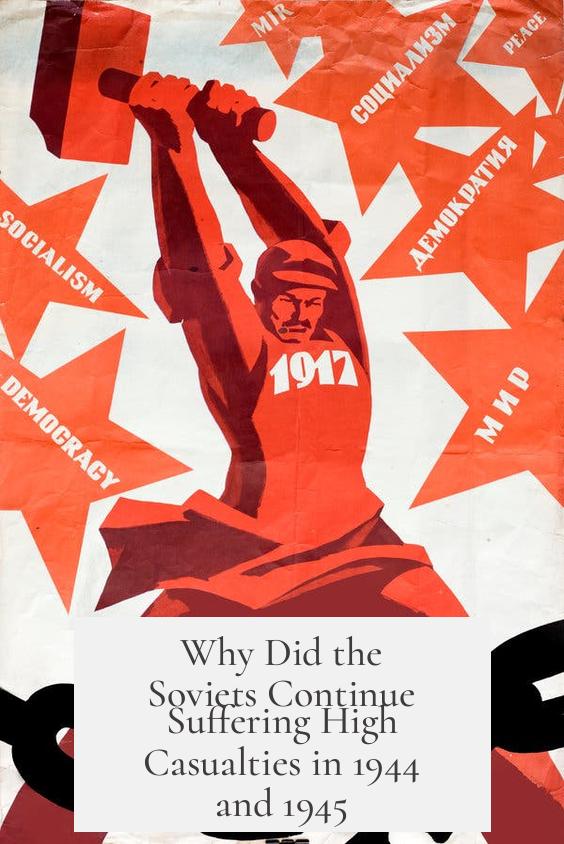
The Soviets kept taking heavy losses in 1944 and 1945 mainly because they were relentlessly on the offensive against a fiercely determined, ideologically driven enemy, employing costly tactics like the deep operation doctrine while battling through brutal urban warfare and facing strained manpower resources. Now, that’s quite a cocktail of hardship to unpack! Let’s dig deeper and piece together the puzzle of why the Soviet Red Army paid such a high toll even as they pushed the Nazis back.
Imagine you are the Soviet commander in late 1944. Your orders are clear: attack, break the German lines, and roll forward. No question about it. But attacking isn’t like a gentle stroll into enemy territory; it’s more like wrestling a bear that’s got machine guns. It’s brutal and costly.
The Cost of Being Relentlessly on the Offensive
From 1943 through 1945, the Soviets maintained a continuous offensive stance against the Axis forces on the Eastern Front. Why does this matter?
Because attacking is several times more expensive in human lives than defending. Defenders hold fortified positions, backed by machine guns, artillery, and anti-tank weapons that multiply their firepower and survivability. The Soviets needed overwhelming numbers—think of a 3:1 ratio in tanks, aircraft, and troops—to stand a good chance of breaking through defenses.
Such overwhelming odds were not always available. For example, during the Dnieper-Carpathian operation, Soviet forces had just about a 10% numerical advantage, significantly lower than their usual 2:1 or 3:1 buildup. Not surprisingly, casualties soared.
German Ferocity and Fanaticism Raised the Stakes
The Soviet losses weren’t just about numbers or tactics. The enemy mattered, too, and the Germans were driven by a ferocious, fanatical will to resist.
The German soldiers, especially late in the war, fought like cornered tigers, motivated by a totalitarian regime’s indoctrination that made dying meaningless yet mandatory. Battles in Budapest and Berlin are prime examples. These fights were not just battles; they were desperate exercises in attrition. The defenders threw themselves into combat with a fanaticism that hardened their defense and escalated Soviet casualties.
“No democratic army could have gained that willingness to die for no good reason,” a contemporary observer rightly noted.
The Deep Operation Doctrine: Massive but Costly
The Soviets employed a unique military strategy called the Deep Operation doctrine, which demanded large-scale simultaneous attacks throughout the entire depth of the enemy’s defenses. The goal was to encircle and destroy enemy forces, not just drive them back.
This kind of battle isn’t a walk in the park. When you engage the entire depth of the enemy formation, every Soviet soldier and unit exposed to fire could find themselves under direct German retaliation.
The Germans, heavily armed with the fearsome MG-42 machine gun (with up to three per platoon), could lay down intense suppressive fire. Charging these fortified positions was costly. Tanks provided some relief but were often used in exploitation groups rather than initial assaults.
While the doctrine’s results were significant in breaking German capacity, the casualties mounted for the Soviet side. The heavy human cost was a feature, not a flaw, of this method—tailored for the vast geography and strategic circumstances Soviets faced.
Urban Warfare: The Bloodiest Frontline
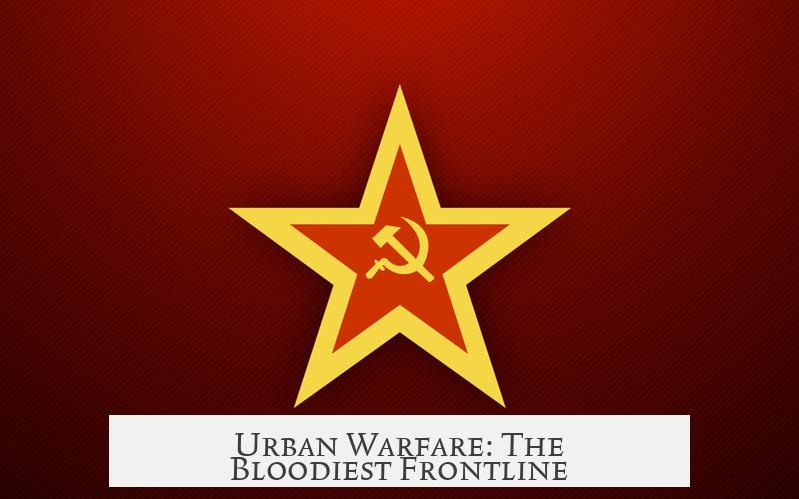
By 1945, the Soviets were pushing through some of Europe’s most densely populated urban areas. Cities like Budapest and Berlin turned into monstrous battlegrounds.
Urban combat is famously brutal. It favors defenders, who can fight from buildings, streets, and sewers—turning every corner into a death trap. Soviet attackers often had to storm fortified city blocks, street by street, a process reminiscent of grinding meat rather than sweeping victories.
Such urban offensives created ‘oversized’ battalions and corps, with disproportionate casualties. Attrition ruled. The price tag? Massive Soviet casualties that, while strategically necessary, made their victory all the more costly.
Casualties vs. Fatalities: Understanding the Numbers
When we talk about casualties, it’s easy to imagine only death, but it’s not the same. Casualties include killed, wounded, and missing soldiers.
The Soviets had enormous casualty numbers, but many of these were wounded, not killed outright. Wounded men might return to combat after healing or serve in less demanding roles. Similarly, German wounded included many fatalities and captured soldiers, both of whom were effectively lost permanently.
For example, Operation Bagration appears to show higher Soviet casualties at first glance, but a deeper look reveals most Soviet casualties were injured soldiers who might later return to duty, while German losses were heavily weighted by killed or captured, who were lost forever.
Reporting Disparities and Statistical Nuance
Historical records are never perfect. The Soviets and the Wehrmacht used different methods to count casualties, especially wounded-in-action. German medical services and the Wehrmacht sometimes reported dissimilar numbers.
This discrepancy means we must be cautious comparing raw Soviet and German figures. Numbers alone don’t always tell the full story of battlefield costs.
Numerical Superiority Isn’t Always the Whole Story
The long-run Soviet strength on the Eastern Front was impressive, but their advantage often came from sheer numbers concentrated at the decisive points.
Even so, because the Soviets often had more soldiers engaged, the total number of casualties was inevitably higher—even if the proportional losses were relatively lower. The battlefield was, in essence, a plentiful “target-rich environment.” More soldiers meant more losses.
Soviet Weariness and Manpower Strain
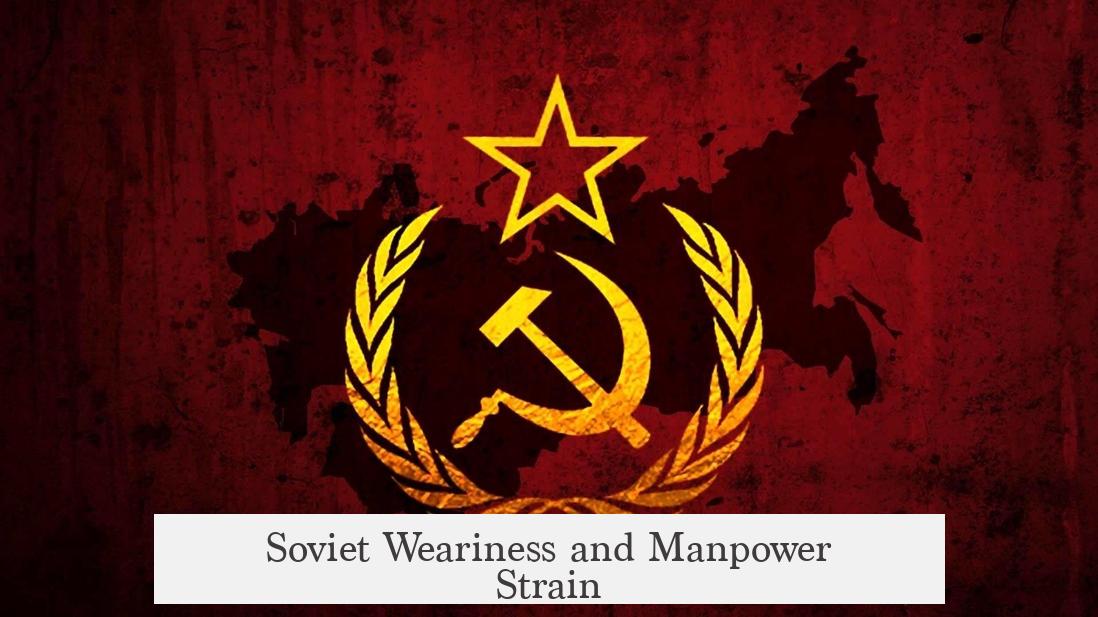
Contrary to popular belief, by 1944 and 1945, Soviet forces were not invincible juggernauts charging endlessly without fatigue.
Their manpower was strained almost as much as Germany’s. The unrelenting pace of continuous offensive operations led to frontline units filled increasingly with inexperienced, green soldiers. The constant attrition meant the Red Army was often battling not just the enemy but exhaustion and inexperienced replacements.
This human factor compounded the casualty problem, as inexperienced troops were more vulnerable to battlefield dangers, further driving losses up.
Bottom Line: Why Did Soviet Casualties Stay High?
Soviet high casualties in 1944-45 resulted from a perfect storm of harsh realities. They had to keep attacking defensive German lines almost continuously. These German defenders, powered by fanatical loyalty and superior defensive tactics, fought stubbornly.
The Soviet military doctrine invited massive, simultaneous battles aiming for total destruction—fighting through the literal and figurative depths of enemy defenses. Urban warfare added a bloody apex to their losses. Meanwhile, exhausted manpower pools, often filled by inexperienced soldiers, took their toll.
So next time you hear about those heavy Soviet losses, remember: they weren’t wasted. They came as part of a calculated, if costly, strategy to hammer and crush a deadly enemy across vast territories, bite by bloody bite.
Lessons and Reflections: What Can We Learn?
- Attacking costs lives. Even the most well-prepared offense against a determined defender is a human grind.
- Tactical innovation must balance with manpower realities. The Deep Operation doctrine was brilliant but expensive.
- Urban warfare demands special consideration. Fighting in cities multiplies casualties beyond typical field battles.
- Numbers alone don’t tell the whole story. Different casualty reporting and battlefield roles affect how losses should be understood.
- Morale and ideology shape casualty rates. The fanaticism of defenders made Soviet advances costlier than they might have been.
- Endurance matters. Even the vast Soviet military could be worn thin by endless offensives.
In essence, the high Soviet casualties from 1944 to 1945 were the “price of victory” — a testament to the brutal nature of total war on the Eastern Front. It’s a story of relentless offense, fierce resistance, deep doctrine, hard urban battles, and human cost all intertwined.
Curious about other lesser-known aspects of the Eastern Front or how specific battles shaped these casualty figures? Feel free to dive deeper with us—history has more stories than just the numbers alone!
